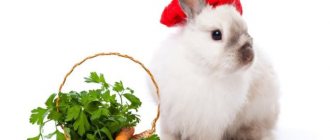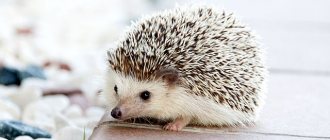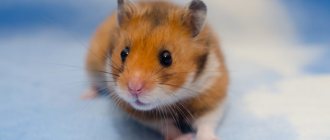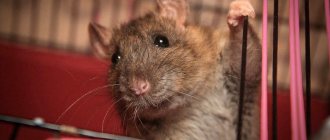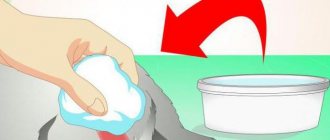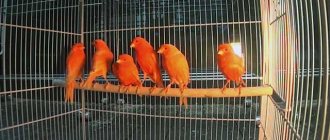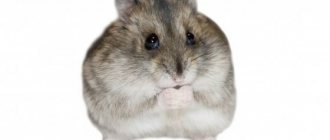Rat diet: features
Despite the fact that rats are rodents, their diet is more varied than that of other relatives. These animals are omnivores, so their diet can contain products of both plant and animal origin.
The nutritional structure of rats can depend on many factors, which include the personal preferences in food of each individual individual. That is why the predominance of certain products in the diet of these animals is an individual feature of various territorial groups, as well as climatic regions.
Did you know? Rats are one of the oldest animals inhabiting the Earth. They appeared on the planet 48 million years earlier than humans.
Rats are nocturnal animals, so they often feed only in the dark, no more than 2 times a night. The most favorable periods for feeding in these rodents are late evening and early morning, but if necessary, their daily routine can change instantly.
In most cases, this is observed when there is an acute shortage of food or its excess. When food is scarce, rats can become active during the day, and the number of meals they eat can increase to 4.
This is especially acute during active reproduction and bearing offspring. If there is a surplus of food, these animals can be fed evenly throughout the day and in small portions.
It is believed that in order to provide a rat with all the necessary nutrients, an average adult animal needs to eat about 30-40 g of food.
It will also be useful for you to learn how to care for a decorative rat, what to feed and how to keep a Dumbo rat, how long do rats live.
But in order to fully ensure a healthy diet, such nutrition must have a special structure:
- 60-65% of the diet is carbohydrates;
- 25-30% of the diet is protein compounds;
- about 10% of the diet is fat.
In addition, it should be remembered that solid food must be present in the diet of rats. This feature is a physiological need.
Rats' teeth grow throughout their lives, so solid food provides rodents with natural tooth wear, without which the animal faces serious oral abnormalities.
Additional food for rats - list of products
Rats are omnivores by nature and can eat a wider variety of foods than many other animals. This is one of the reasons why they are one of the most widespread species on our planet. Given the tendency of rats to preferentially consume high-calorie, high-fat foods, these foods should be limited. Therefore, greens and vegetables should make up the bulk of complementary foods, along with a variety of grains, proteins, fats and fruits. Here are some great options for each of these categories and dosage recommendations:
Vegetables and greens (1-2 teaspoons per day)
- Lettuce leaves
- Cabbage
- Pumpkin
- Green bell pepper
- Cucumber
- Zucchini or zucchini
Cereals (0.5-1 teaspoons per day)
- Cooked brown rice
- Whole grain cereal (unsweetened puffed rice or wheat)
- Cooked pasta from durum flour
- Oats
- Barley
- Whole grain crackers (no salt, sugar or additives)
Proteins (2-3 times a week, 0.5-1 teaspoons)
- Hard boiled eggs
- Mealworms
- Boiled beans
- Boiled chicken fillet
- Crickets
- Skim cheese
Fruits (2-3 times a week, 1 teaspoon)
- Apple (without seeds)
- Melon
- Banana
- Blueberry
- Strawberries
Fats (2-3 times a week, 0.5 teaspoon)
- Pumpkin seeds (unsalted)
- Sunflower seeds (unshelled, unsalted)
- Pistachios (without shell, unsalted)
- Pecans (unsalted)
- Brazil nuts (unsalted)
- Avocado (without skin)
A varied, balanced diet is very important for pet rats, but may require some patience and cunning. Rats tend to be neophobic, meaning they often avoid new foods or even foods they haven't eaten in a while. Therefore, new products should be introduced slowly and gradually. In order not to overload the rat, it is better to offer unfamiliar food in small quantities (no more than the size of a pea) mixed with food that is familiar to it. Once your rodent gets used to the new food, you can try feeding it on its own.
The first step to caring for your kitty rat is understanding what it needs and how it grows. Being aware of your furry animal's nutritional, physical and psychological needs will improve its chances of living a long, quality life.
Didn't find what you were looking for? Use the site search form
What do rats eat in the wild?
In the wild, food for these rodents is:
- seeds;
- nuts;
- fruits and roots;
- succulent stems of various plants;
- bird eggs;
- insects;
- larvae;
- worms;
- freshwater shellfish;
- fish fry.
Wild rats also love to hunt, so their food can be:
- lizards;
- toads;
- small species of birds and mammals.
However, such a diet predominates in these rodents exclusively during warm periods of the year, since in winter wild rats migrate en masse closer to humans, and in this case any food or its remains become food for them.
In search of food, some groups of rodents can also attack small domestic animals. Such cases are not uncommon, especially in harsh and hungry winters.
Did you know? Due to the physiological characteristics of the body, wild rats are not able to regurgitate products that are indigestible in the gastrointestinal tract. Therefore, before eating anything new, rodents must first try the food and only after a while return to the new product.
What Do Pet Rats Eat?
Often, a huge number of owners of pet rats make a lot of mistakes when feeding their pets, since all kinds of waste from the human table become food for rodents.
In most cases, domestic rats do not refuse such nutrition, but in this case, after some time, the animal develops various pathologies of organs and systems. This is why creating a rich and healthy diet is vital for these animals.
Daily diet
The daily diet of a domestic rat should consist of the following products:
- greens: dill, cilantro, all kinds of lettuce, parsley, radish leaves, dandelion, celery, plantain, clover, wheat sprouts, oats and other grains;
- boiled vegetables: potatoes, turnips, cucumber, cabbage;
- fruits: all types of fruits are allowed, but citrus fruits (lemon, orange, tangerine, etc.) and pomegranate should be included in the diet carefully and in small portions, as they can cause severe allergies;
- berries: any variety is allowed; raspberries are a special treat for these rodents;
- dairy products: any types of fermented milk products (cottage cheese, kefir, yogurt, sourdough, etc.);
- grain products: wheat, oats, corn, oat flakes. In winter, the diet should be enriched with barley, millet and sunflower grains;
- nuts: all varieties are acceptable, with the exception of almonds, which should be completely excluded from the diet, or given in small quantities and with extreme caution;
- soy food: any variety and in unlimited quantities;
- meat: occasionally a rat can be pampered with a small amount of boiled pork, beef, chicken, turkey. You can replace meat products with kitten food or low-fat boiled bones;
- fish: you can eat fish in unlimited quantities, but your attention should be focused exclusively on low-fat varieties;
- eggs: quail eggs are the most beneficial for rodents, but this product should be included in the diet no more than once every 7-10 days.
Important! When feeding rats apricots, peaches and other stone fruits, be sure to remove the stones, as they contain cyanide, which even in small quantities is hazardous to the health of rodents.
Treats are an integral part of the diet of almost any mammal, and domestic rats are no exception. However, you can occasionally pamper your pet with only a few products.
Only suitable for these purposes are:
- ham;
- sausage;
- low-fat milk;
- low-fat sour cream;
- hard cheese;
- crackers;
- sweets with low sugar levels;
- juices
The basis of the rodent's diet should be grain products and nuts , they should be used daily and in unlimited quantities. Fruits, boiled vegetables, animal products and lactic acid products are used as bait.
In a balanced diet, bait from fruits and vegetables should predominate (every day or every other day, 30-40 g per individual), bait from animal products is used no more than 2 times a week (15-20 g), but lactic acid products should Use no more than once a week (1 tablespoon).
During illness
During the period of various diseases, the rat’s diet should not be radically changed, since a balanced diet is exactly what the animal’s body, weakened by disease, needs.
But in order to maintain your pet’s health in difficult times, its food must be supplemented with products with a high content of highly active substances. Only they are able to have a gentle effect on the body, as well as have a beneficial effect on the basic processes of restoring the health of the animal.
In order to have an antibiotic effect on the rat’s body, the following are best suited:
- bananas;
- raspberries;
- plum;
- eggplant;
- garlic;
- onion;
- yellow mustard;
- Echinacea tea (instead of drinking water).
Learn about the types of pet rodents and how to choose and care for a jerboa, hamster, guinea pig, prairie dog, gerbils, dormouse, chipmunk, and Chilean squirrel.
The following have antiviral properties:
- onion;
- cranberry;
- plum;
- prunes;
- strawberries
Some of the most common diseases in rodents are arthritis and various malignant and benign tumors. Therefore, in order to have an antitumor effect on the animal’s body, broccoli must be present in its diet.
Well, in order to reduce the manifestations of arthritis, as well as prevent the development of this disease, the rodent should be given garlic and ginger weekly.
Did you know? Rats began to be actively used as a decorative animal in the first half of the 19th century.
During pregnancy and lactation
Pregnancy is a special time in the life of every mammal. During this period, the mother’s body needs additional amounts of various nutrients, without which it is difficult to imagine the favorable development of the fetus.
Therefore, in order to support the mother rat’s body during pregnancy, her food must be enriched with additional sources of protein, vitamins and minerals, as well as compounds harmful to the development of the fetus must be eliminated.
In the first half of pregnancy (10-14 days):
- the most useful products for the animal will be: chicken or turkey meat, poultry cartilage, apples, fresh willow branches;
- The consumption of: liver, grain sprouts, broccoli should be limited;
- You need to completely exclude: garlic, onions, tomatoes, bell peppers.
In the last stages of pregnancy (after 14 days):
- the most useful products for a rodent will be: chicken or turkey meat, poultry cartilage, apples, cottage cheese, fish, nettle leaves;
- You should limit your consumption of: egg yolks, cucumbers, lettuce;
- You need to completely exclude: garlic, onions, grapes and raisins.
Feeding the rats
Rats are omnivorous animals, so they will happily eat almost any food from the human table. But this is not a reason to feed them anything. Like any living creatures, rats have preferences for certain foods, and they simply don’t like something.
Sometimes you hear that rats are accustomed to eating waste from garbage dumps, so it is quite possible to feed your pet rotten food, and nothing will come of it. They also say that rats are rodents, so grain and bread crumbs are enough for them; You should not bother yourself with preparing complex diets. Some “experts” add that rats should not eat meat or fish.
All three of these “rules” are nothing more than myths. Let us emphasize once again that domestic rats have nothing in common with their wild relatives and in no case should they be fed stale food or grain alone. In order for your pet to always be healthy, active and cheerful, you must strictly follow the rules of feeding it.
The feeding habits of rats are related to the structure of their digestive system. Fiber, which is contained in the green parts of plants, is not completely digested in their body, and in order to obtain sufficient nutrients, you need to eat several times more plant food, which is almost impossible for a rat.
So, the food must contain proteins, fats and carbohydrates, which the rat’s body will spend on the formation and growth of new cells. The energy received by the animal as a result of the breakdown of carbohydrates is needed for everyday active life; A lack of certain substances in food can lead to health problems for your pet. In order to properly balance the diet, you need to take into account the time of year, the way the animals are kept (for example, the location of the cages - in a heated room or not), age, and the physiological characteristics of a particular biological species.
During the day, an adult rat should eat about 30–40 g of food, which consists of 25 g of grain mixture, 5 g of vegetables and 5–7 g of animal food. Pregnant and lactating females are given about 5 g of pasteurized fresh milk.
Grain mixtures
Rats can be fed what humans eat, but the main ingredients in their diet are seeds and vegetative parts of plants. However, for normal growth and development, rats need a variety of types of food, which must include proteins, fats, carbohydrates, minerals and vitamins. None of the types of food, taken separately, can provide all the nutritional components necessary for the normal life of animals.
As the main food for rats, it is better to use seeds of plants, mainly herbaceous and tree species. They are given in the form of a grain mixture, which should include cereal seeds (oats, millet, barley, etc.). Also included in the grain mixture are sunflower seeds, hemp seeds, flax seeds, meal, cake, nuts, peas, and rapeseed. But oilseeds should make up only 30–35% of the total composition of the mixture in winter and 20% in summer. An overdose of oilseeds in the diet can cause obesity, metabolic disorders or severe gastrointestinal disease.
What could be better than delicious food from a beautiful and convenient feeder?
In addition to peas, beans and soybeans from the legume family can be included in the diet of rats, but they must be given boiled, since raw beans swell greatly and the animal may experience intestinal volvulus. The maximum portion of legumes in the diet is 10–12%. In addition to them, rodents happily eat dried seeds of wild plants, berries and strawberry rhizomes.
It is not necessary to clean the grains before placing them in the feeders - the rats will do it themselves; the only exception is wheat, the grains of which are covered with a thin, almost imperceptible film, but even they do not need to be peeled. Porridges are usually made from low-vitamin grains such as millet, pearl barley, and oats.
If you feed your rat only grain mixtures, a decrease in appetite and activity will soon be noticeable. The fact is that, for all their energy value, cereals contain almost no amino acids and minerals, especially calcium and phosphorus.
Rats eat vegetables irregularly, and the manner of gnawing them into small pieces is characteristic of all rodents. Thus, they suck out the juice, but eat only a small part of the fiber.
To increase the nutritional value of grain mixtures, you need to add fresh herbs to them in the summer, and hay, grass meal, vegetables or dried root vegetables in the winter. It is also imperative that the animals regularly receive animal food.
Animal feed
The diet of rats as animal food includes cottage cheese, milk, butter, lard, shellfish, squid, hamarus (small river crustaceans), insects and their larvae (mealworms, maggots, etc.), meat and bone meal.
In order to always have animal food at hand, especially in cases where you are breeding rats (babies simply need it), beetles and larvae can be bred at home. The most commonly grown mealworm larvae and houseflies. The process of breeding flies is quite complex, so this publication describes only the method of breeding mealworms.
The larvae of the mealworm, a large black beetle with a brownish tint, are mealworms 25-30 mm long. They have a yellowish-brown color. They should not be confused with the small (5.5 mm), chocolate-colored larvae of the lesser flour beetle. Despite the fact that rats also readily eat them, it is not recommended to breed such animal food at home, because due to their small size, the larvae of the small mealworm easily crawl out of the drawer.
To germinate wheat grains, they are washed and filled with water for a day. Then the water is drained and the grains are left on a damp cloth for 10-12 hours. Then the grains are again filled with water for the same time, and so on until the grains germinate.
Mealworms are grown in a small (35 x 25 x 15 cm) wooden chest made of tightly fitted boards at an air temperature of 18–25 ° C. To allow air access, several holes are drilled in the lid, which are covered with a fine metal mesh. The inside of the box is covered with foil, several rows of rags are laid on the bottom, sprinkled with bran, and several mealworms are placed inside. Instead of bran, you can use leftover oatmeal.
Mealworms reproduce quite quickly. They first turn into beetles that lay eggs. From them, in turn, larvae hatch, etc. Larvae and beetles, feeding on bran, turn it into flour, so it is necessary to periodically add fresh bran and greens to the box.
You can supplement your rats' diet with a variety of soft foods, that is, human-prepared food and vitamin supplements. White bread dipped in milk and milk porridges (oatmeal, wheat, rice) are eaten with pleasure by both adults and cubs. They can be given 1-2 times a week. Surrogate mixtures are prepared on the basis of grated carrots, adding ground crackers, hamarus or hard-boiled chicken eggs. These mixtures are prepared in small quantities immediately before feeding the animals. The necessary vitamin food for rats is sprouted grains (wheat, barley, oats), beet leaves, rutabaga, cabbage, yarrow, dandelion and fresh or dried berries.
The daily feed intake may vary depending on the season, the weight of the animal, its age, physiological state, room temperature, etc.
Therefore, in order to prevent your pet from losing his appetite, you need to diversify the menu with new foods.
Mineral supplements
As a result of vital activity, mineral substances are released from the animal's body, which are replaced by new ones coming from food and water. Water loss in the body occurs in various ways: through breathing, through the skin (sweating), through the digestive tract and through the excretion of fluid by the kidneys. Therefore, water is a very important component of the animal's diet. When keeping rats at home, there should always be clean drinking water in their cages.
Minerals are found in varying concentrations in food and water. When feeding rats monotonous food, the balance of these substances in the body is disrupted, which can adversely affect the well-being of the pets.
Most often, animals suffer from a lack of calcium and phosphorus. Sometimes this occurs due to an excess of potassium, magnesium, oxalic acid, proteins and fiber in the body, which inhibit the absorption of calcium. Sources of mineral substances in this case can be meat and bone meal, slaked lime, chalk, etc. Meat and bone meal are added to soft food, and the remaining substances are placed in a separate feeder, and the animals eat them as needed.
In natural conditions, rats suffer greatly from a lack of sodium and often travel in packs in search of salt.
Many plant-based, green foods (cereals and root vegetables) and seeds contain almost no calcium, and long-term feeding of rats only with such food causes calcium deficiency in the body.
Phosphorus, one of the main elements necessary for the normal functioning of animals, in case of its deficiency passes from the bones to other tissues. This microelement plays an important role in the regulation of acid-base balance, hormonal function of the body, it is necessary for the normal processes of metabolism of proteins, fats and carbohydrates and is an energy accumulator in the body.
Phosphorus, like calcium, is necessary for the formation of bones, so its deficiency causes rickets, osteomalacia, osteoporosis, leads to joint stiffness, muscle weakness, decreased appetite and exhaustion of the animal.
The water bowl for rats should be heavy enough so that the animals cannot turn it over.
Calcium and phosphorus are best absorbed in the presence of vitamin D in the blood, which, in combination with protein, transports minerals from the intestines to the blood.
The saturation of the body with phosphorus is hampered by excess zinc, iron, magnesium and some other elements.
Magnesium is involved in oxidative processes and the mechanism of thermoregulation, maintains osmotic pressure in the tissues and fluids of the body and ensures the functioning of the neuromuscular system. With its deficiency, the structure of tissues changes, the metabolism of carbohydrates and phosphorus is disrupted, blood vessels dilate, the pulse quickens, the hairline thins and the level of calcium in the bones decreases.
A lot of magnesium is found in salts, phytin and chlorophyll (green food). This element is much better absorbed by animals if the feed contains a sufficient amount of sodium, manganese, zinc, aluminum, copper, molybdenum, phytic acid and vitamin D ions.
The largest amount of potassium is found in red blood cells, protoplasm and muscles, having a great influence on the functioning of the neuromuscular system, carbohydrate metabolism and blood pressure. In addition, it is necessary for the formation of an enzyme that activates tyrosine in the liver. However, increased potassium levels in the body disrupt sexual cycles and impair magnesium metabolism. To prevent this from happening, it is necessary to add table salt to the rats' food (in its pure form it can lead to poisoning).
Sodium plays a huge role in water metabolism, is necessary for the construction of new tissues and is part of dietary juices. A lack of sodium in the body of animals shifts the acid-base balance towards acidity, which is extremely unfavorable for the synthesis of new substances. In addition, its deficiency reduces the rhythm of sexual cycles, and its excess leads to poisoning. Therefore, when preparing food for pets, it is necessary to add a little salt, and in case of chronic sodium deficiency, fish meal can be introduced into the diet.
Rats cannot live without water. Its absence during the day can negatively affect the health of the animals and their offspring.
Sulfur is found in the body of animals in the form of complex organic compounds. With their help, the biosynthesis of B vitamins and the digestion of cellulose, which is abundant in the green parts of plants, occur. The main symptoms of a lack of this element in the body are hair loss, dull eyes, loss of appetite, and apathy. Sources of replenishment of sulfur in the body of animals are feed of animal origin (milk and dairy products).
It is very difficult to overestimate the role of iron in metabolism in the body of rats. This element is found in many enzymes that are components of the respiratory chain. Iron is found in sufficient quantities in plant foods (wheat bran, greens, yeast, etc.) and is easily absorbed.
Most minerals, except calcium and phosphorus, are needed by rats in very limited quantities, and some in negligible quantities, so they must be in the required doses and evenly distributed in the food fed to animals. For this purpose, mixtures of microadditives (premixes) made from wheat bran, yeast, soy flour and animal feed are used.
Vitamins
In addition to minerals, rats need vitamins - organic substances with high biological activity - for the normal functioning of rats. They are found in almost all types of feed.
- Vitamin A is found in milk, fishmeal and egg yolks. It promotes the growth and reproduction of animals.
- Vitamin B1 (thiamine) is rich in grass flour, bran, dairy products, baker's yeast, and oats. It ensures the functioning of the nervous system and promotes carbohydrate metabolism.
- Vitamin B (riboflavin) is found in yeast and sprouted grains. It is also responsible for the normal functioning of the nervous system and reproductive abilities of animals.
- Vitamin B (pyridoxine) is found in bran, yeast and grass flour. It is a growth stimulator and protects against skin diseases and conjunctivitis.
- Vitamin B12 is found in fishmeal, shellfish meat and special preparations. Although it is required in very limited quantities, vitamin B12 contributes to the formation of a number of amino acids missing in the diet.
- Green food, fresh vegetables and root vegetables are rich in vitamin C (ascorbic acid). It strengthens the animals' immunity to colds, and its deficiency significantly inhibits the growth of rats.
- There is quite a lot of vitamin D in fish oil. It regulates calcium and phosphorus metabolism and prevents the development of rickets.
- Vitamin E is found in greens and sprouted grains of plants and is responsible for reproductive functions.
- Vitamin K is found in the vegetative parts of plants, hay, and root vegetables. It regulates blood clotting.
If there is a lack of vitamins in the body of rats, you can use synthetic analogs that are sold in pet stores. Before buying such vitamins and feeding them to animals, you need to consult with a veterinarian, who will determine the type of drug and dosage, since an overdose can cause not only illness, but also the death of the animal. But it is better to do without such funds, providing your pets with nutritious food.
Feed rations
Food for decorative rats must be well balanced. This means that all nutrients and vitamins must be present in sufficient quantities.
A feed ration is the set of feeds an animal needs for a day. It is calculated based on the number of feed units, digestible protein, calcium and phosphorus. The nutritional value of 1 g of oats is conventionally taken as a feed unit, and the nutritional value of other feeds is determined in comparison with it.
To create a diet from the products available in the house, you first need to know how much food you need to give your animal (Table 5). You can also feed your pets with ready-made formulas sold in pet stores.
Table 5
Daily norms of feed for rats, g
| Stern | Adult | Young animals weighing 40-130 g | Young animals weighing 131-240 g | Young animals weighing 240-350 g |
| Grain mixture | 35,0 | 10.0 | 15.0 | 15.0 |
| White bread | 12.0 | 23.0 | 4.0 | 6,0 |
| Groats | 9,0 | 1,5 | 3,0 | 4,5 |
| Milk | 25.0 | 5.0 | 8.0 | 10.0 |
| Meat | 10.0 | 3,0 | 5,0 | 7,0 |
| Juicy feed | 35.0 | 10,0 | 20.0 | 20.0 |
| Fish meal | 1.0 | 0.3 | 0.5 | 0.7 |
| Bone meal | 0,5 | 0,1 | 0,2 | 0,3 |
| Feed yeast | 0,5 | 0.1 | 0.2 | 0,3 |
| Fish fat | 0.5 | 0.1 | 0.1 | 0,2 |
| Table salt | 0,3 | 0,1 | 0,2 | 0,2 |
When feeding, it is very important to take into account the age of the animal, its fatness and sexual cycle. During the period of preparation for mating and at the beginning of pregnancy, the female should limit the amount of fats, carbohydrates (starch, sugar) and fiber. And animals that are too plump before mating can be put on a light diet: limit the consumption of fatty foods, as well as barley and corn. During pregnancy and nursing, the female requires food rich in minerals and vitamins. In addition, during this period you need to add chalk, crushed slaked lime or shell rock to your food.
Rats do not like too sudden changes in diet. You should not switch to new food immediately, but increase its intake gradually.
Young rats need protein food during their growth period. A large amount of protein is found in peas, sunflowers, hemp and animal feed (dairy products, dried invertebrates, etc.). And they will be provided with vitamins by green food (sprouted grains, dandelion leaves, etc.).
The diet for all types of rats kept at home is almost the same. However, it should be taken into account that in nature the gray rat is almost a predator.
Unlike other types of rats, black rats need to increase the amount of greens and fruits in their diet, and their overall food consumption should be slightly reduced.
Rat feeding technique
All products that are fed to animals must be well cleaned, washed and stored in closed containers, inaccessible to wild rodents that carry diseases.
Before feeding to animals, vegetables and root crops are carefully sorted, removing rotten and damaged ones, cleaned of soil, washed and cut into large pieces.
It is advisable for rats to have small feeders.
Only pasteurized or boiled milk is suitable for feeding rats. It must be fresh, free of foreign odors and impurities. It is recommended to feed pets 2 times a day, morning and evening. The exception is pregnant females - they are fed 3-4 times a day.
Since rats are predominantly nocturnal, the bulk of the food is best given late in the evening, around 20-22 hours.
Rats should be tamed to milk gradually, otherwise the animals may develop gastrointestinal dysfunction and refuse to eat.
Despite the fact that rats prefer a nocturnal lifestyle, it is quite easy for them to change their routine.
To do this, their favorite food is served in the morning, and evening feeding is made earlier.
It is possible and it is not possible
And yet, what can and cannot be given to rats? Are there any foods that can be hazardous to the health of your pets?
The list of things you can give to rats is quite extensive. Cereals and animal feeds, as well as feed additives, were described in detail above. Let's list the foods that can be given to rats.
- Grain - wheat, millet, oats, barley, corn, sunflower and pumpkin seeds, flax grains, oatmeal, etc.
- Vegetables - carrots, radishes, pumpkin, eggplant, cabbage, cauliflower, Brussels sprouts, kohlrabi and other types of cabbage (preferably boiled), potatoes (boiled only), cucumbers (raw only), garlic, onions, etc. .
- Greens - parsley, dill, celery, cilantro and radish tops.
- Berries - strawberries, currants, cranberries, blueberries, etc. Rats especially love raspberries.
- Dairy products - cottage cheese, kefir, fermented baked milk, yogurt (not very fat, without fillers), baby food.
- Meat - beef, pork, lamb, chicken, etc. (all boiled), bones (unfried only), meat baby food and meat food intended for small kittens.
- Soy feed.
- Dry food - dried greens, including dandelion and nettle, nuts, even dry pasta.
If your rat refuses to eat, it could be a sign that it has an upset stomach, damage to its mouth or esophagus, or even serious gastrointestinal problems. If she does not eat food within 1-2 days, she must be taken to the vet immediately.
- Mineral supplements - chalk and special mineral stones for rodents (they can be purchased at pet stores).
- Vitamin supplements - fish oil (in small doses), special vitamins for rodents, drops (vitamins in pills).
This is not a complete list of those products that you can safely offer to your animal.
In addition to the above, you can give your rat porridge, boiled pasta, low-fat meat broth, bread, and crackers.
The list of foods that should not be given to rats is much shorter.
- Spoiled, rotten or moldy food.
- Fried food.
- Too fatty meat or dairy products.
- Chocolate and products containing it.
- Salted meats, vegetables or other foods.
- It is prohibited to give some foods raw. These include potatoes, red sprouts, Brussels sprouts, artichokes, beans, bean curd, and sprouted potatoes.
- Carbonated and alcoholic drinks.
Diets for rats
All of the above rules for feeding rats were given without taking into account the personal characteristics and physical condition of a particular individual. If your rat is sick, too thin or too fat, or just sad and inactive, you should try changing its diet.
So, a rat that has suffered a serious illness may need a diet to increase weight, and if you have overfed your pet, it is better to help it lose weight before obesity, in turn, becomes the cause of some serious illness.
Diet for weight gain
A rat can lose weight for various reasons. One of them, the most common, is still a serious illness. But, in addition, prolonged stress and simply improper feeding can lead to weight loss. In this case, urgent action must be taken.
If your pet refuses to eat special rat food, this is not a sign of a serious illness. Perhaps the rat is simply not used to it and does not want to give up the food it was fed before. But if you absolutely need to teach your rat to eat food, you should simply not give it anything other than it for several days.
One of the main measures is to include more high-calorie foods in the diet. These include:
- pork, beef or chicken meat (not very fatty, but not lean either);
- boiled eggs;
- some dairy products, in particular cottage cheese and cheese;
- dried fruits: raisins, dried apricots, dates, figs, etc.;
- bread, bakery products, oatmeal;
- peanuts and walnuts, as well as sunflower seeds;
- legumes (peas and beans);
- sunflower and olive oil.
These products should be included in the rat’s usual diet, and not completely replace with them everything that your pet is used to. Otherwise, she may stop eating altogether and, instead of gaining weight, will continue to lose it.
If you want your rat to get better quickly, feed it 2-3 times a day, and in between meals, additionally treat it with some treats.
Rats can be given raw or boiled mushrooms in slightly salted water (porcini, aspen, boletus, boletus, champignons), but in small quantities. It is better not to offer the animal mushrooms that are considered conditionally edible, such as morels or puffballs.
Approximate diet (calculated for one individual)
1st meal – some dried fruits, a small piece of boiled potato with a hard-boiled egg, a slice of cucumber, a piece of fresh carrot, a few sprigs of herbs. You can add 2-3 drops of any vegetable oil to the potatoes.
2nd meal – several nuts, dried apricots or figs (1-2 pieces), oatmeal with milk, cauliflower.
Between feedings, give your pet a piece of cooked meat or cheese. In addition, it is advisable to constantly keep a feeder with dry food in the cage.
If the rat is particularly weakened after illness or childbirth, prepare for it a special nutritious mixture of cottage cheese, minced meat with the addition of sour cream and grated vegetables (eggplant, potatoes, carrots, etc.).
Mix all ingredients thoroughly and add 1-2 drops of liquid rat vitamins.
Diet for weight loss
Excessive obesity in rats, in turn, can lead to the development of all kinds of diseases. Obesity is especially dangerous for an elderly rat: it can cause premature death. Therefore, it is better not to overfeed the animal, force it to move more, etc. And if the rat has gained weight, then it is best to reduce its daily diet and give as little high-calorie foods as possible. However, you should also not put the animal on a starvation diet or feed it only cabbage, even for a short time. The diet must be varied, otherwise you will soon have to treat your rat for vitamin deficiency.
So, what should you feed an overweight rat? It is best to switch to grain feed, completely eliminate pumpkin and sunflower seeds, and oil. Under no circumstances should you give fried, smoked or sweet foods. It is best to feed the animal 1-2 times a day.
Book title: Rats
What to feed baby rats
In most cases, the basis of the diet of newborn rat pups is their mother’s milk, which after 3-4 weeks gradually changes to adult food. In this process, human assistance is practically not needed for rat pups, since their mother knows best how to raise her offspring.
However, in the case of a large litter, the animal is unable to provide equal quality care for all the children, so the weakest individuals are gradually rejected by the mother. In this case, the little rats need emergency human help.
The diet of newborn babies must necessarily consist of all kinds of dairy products, rich not only in lactose, but also in healthy fats, vitamins and minerals. As a breast milk substitute, dog milk is the ideal solution.
If it is not available, you can use goat's milk, but it is best if the baby rat's diet consists of high-quality milk formulas.
The most suitable in this regard are:
- "Zoologic Milk Matrix 33/40";
- "Royal canin babydog milk";
- "Beaphar Lactol".
The transition to artificial feeding should be carried out gradually, according to the following scheme:
- For the 1st and 2nd feedings, the mixture is prepared from 3 parts liquid and 1 part powder.
- For the 3rd and 4th feedings, the mixture is prepared from 1 part liquid and 2 parts powder.
- For the 5th and 6th feedings, the mixture is prepared from 1 part liquid and 3 parts powder.
- Further feeding is carried out with a mixture prepared from 1 part liquid and 3 parts powder.
Important! Before transferring baby rats to artificial formulas, it is necessary to restore their body’s water-alkaline balance; for these purposes, drugs such as “Regidron”, “Hydrovit”, “Pedialyte” or “Humana Electrolyte ” are used.
During the first two weeks of life, rat pups require round-the-clock feeding every 2-3 hours. The amount of such food is prepared in portions, at the rate of 0.5 ml for every 10 g of the baby’s weight. From the second week, the number of meals is reduced to 1 time every 4 hours.
During this period, the feeding mixture is gradually enriched with low-fat cottage cheese and a small amount of cereal flour.
After the 3rd week, rat pups are able to chew solid food on their own, but the transition to an adult diet should be carried out gradually:
- First, the cub must be introduced to adult food, for this he must be allowed to smell and lick the new food. Small pieces of fruits, vegetables and a boiled egg are best suited for these purposes.
- Gradually, one of the rat's meals must be changed to carefully chopped fruits, boiled vegetables or a small amount of boiled egg.
- After the little rat has become accustomed to fruits and vegetables, all kinds of grain products should be actively introduced into its diet.
- By the end of the 4th week, formula feeding must be completely replaced with full-fledged adult food. However, until the age of 1 month, fermented milk products must be included in one of the meals.
- At the age of 1 month, the pups become completely ready for adult food.
Important! After each feeding with artificial formulas, rat pups must be given a drop of Biovestin or an analogue, otherwise they may be at risk of enteritis or other digestive system disorders.
Protein and fat are essential, but don't forget the fiber!
It is generally accepted that proteins and fats are critical in the diet of pet rats. However, fiber is often overlooked and is an essential nutritional element. First, let's look at the two main types of fiber: soluble and insoluble.
Soluble fiber comes from a variety of sources (such as oats, barley, flaxseeds, some fruits, vegetables, and many other foods). As soluble fiber passes through the digestive system, it "attracts" water, forming a "gel" that keeps you fuller longer. Research has shown that soluble dietary fiber is beneficial for many rodent species. They help improve colon health, stool quality, and may lower cholesterol.
Insoluble fiber comes from sources such as wheat bran, cereal hulls and hay, and it does not absorb water. Instead, insoluble fiber passes through the digestive tract relatively unchanged, promoting intestinal motility and maintaining intestinal health. Research has also shown that rodents benefit from insoluble dietary fiber by improving insulin sensitivity (reducing diabetes risk), controlling weight gain, and reducing fat mass (obesity prevention). Pet rats need both types of fiber, and research has shown that combining them provides more benefits than using just one type of fiber.
To sum it up, high-quality fortified rodent kibble will fully meet your little furry's protein, fat, fiber, vitamin and mineral needs. With a good basic diet, supplementary foods can add nutritional, mental, and physical variety to your rat's overall diet.
Dangerous products for pet rats
As mentioned above, domestic rats are omnivorous mammals, but this does not mean that any plant or animal components can become food for them.
Therefore, to ensure a happy and healthy life for your pet, it is imperative to avoid the following foods:
- beet;
- tofu cheese;
- spinach;
- green bananas;
- chocolate in all its forms and combinations;
- alcoholic and carbonated drinks;
- fried and fatty foods;
- expired food;
- raw vegetables.
In addition, do not forget that any extracts and forms of plants such as:
- Kalanchoe;
- agave;
- azalea;
- mistletoe;
- indoor feces;
- aloe;
- fern;
- nightshade;
- horse chestnut;
- crocus;
- amaryllis;
- ivy;
- begonia;
- dieffenbachia;
- lily of the valley;
- lupine;
- carnation;
- rhododendron;
- spurge;
- poinsettia;
- geranium;
- myrtle;
- sunflower;
- tomato leaves;
- daffodils;
- tulips;
- hyacinths;
- cyclamen;
- oleander;
- hydrangea.
